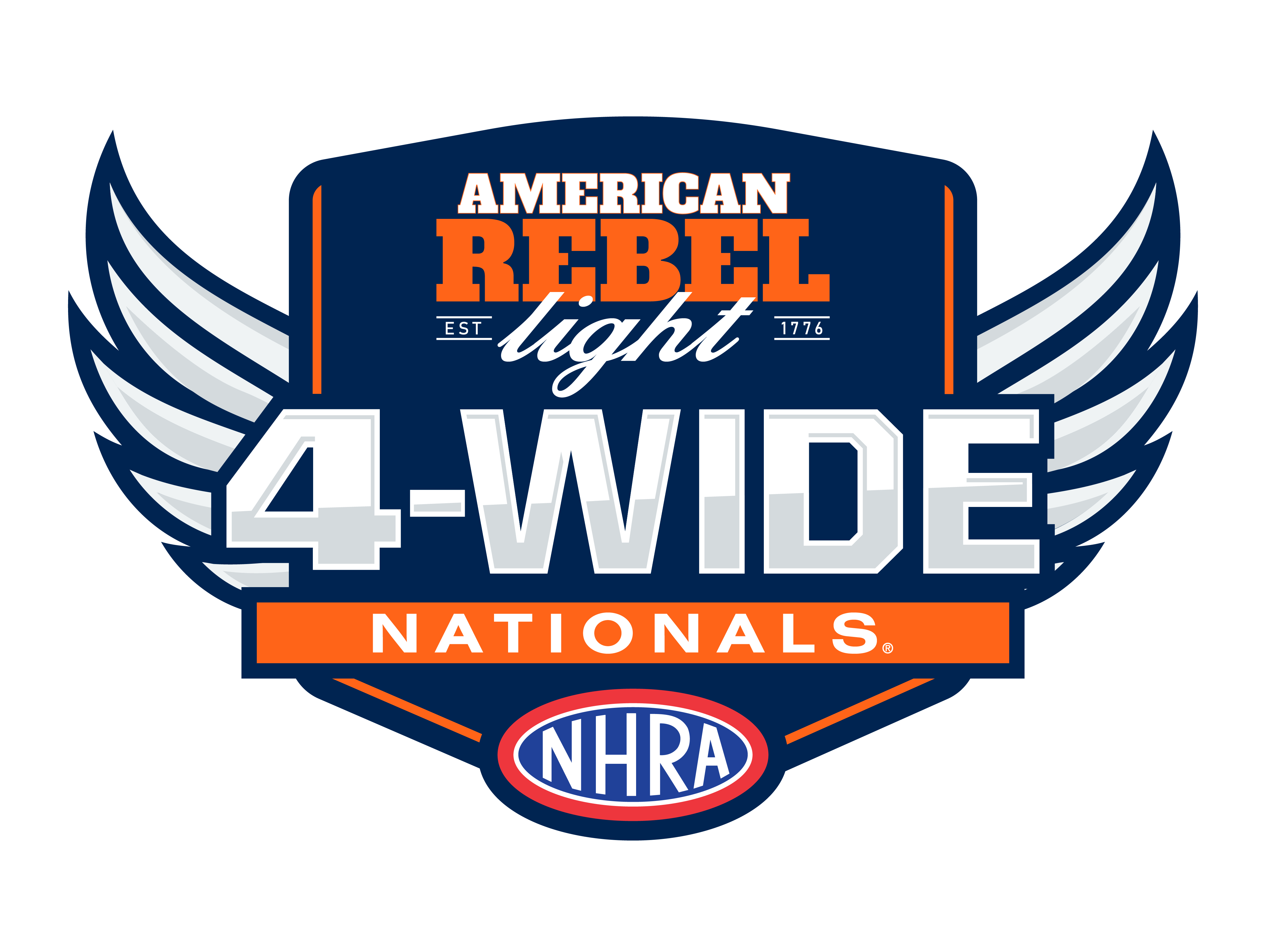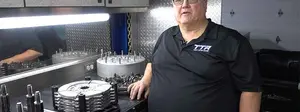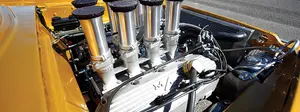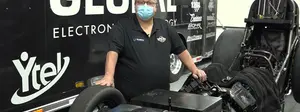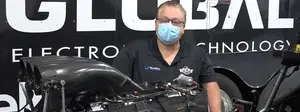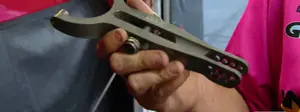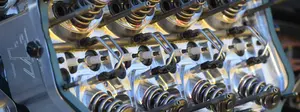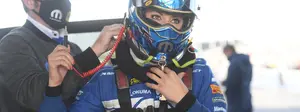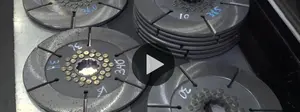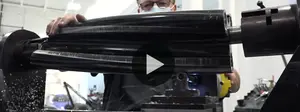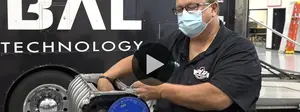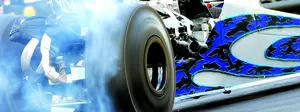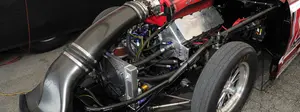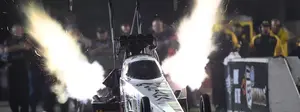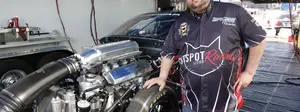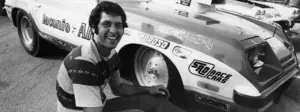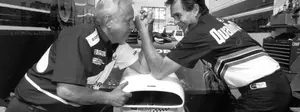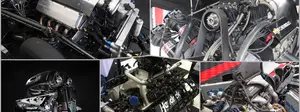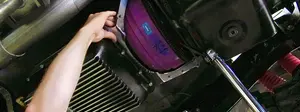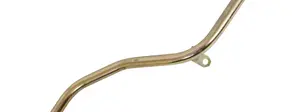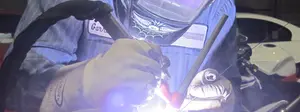

Tech Specs: Inside the supercharged Chevrolet COPO Camaro

The muscle car gods were smiling down on NHRA drag racers when Ford, Dodge, and Chevy began offering supercharged ponycars from the factory. It started when GM reimagined its historic ZL1 engine code as a performance package for the fifth-generation Camaro street car—one that came with a 580-hp 6.2L LSA supercharged V-8. That same year also saw the 2012 COPO Camaro return as a purpose-built drag car for NHRA competition—which offered unique supercharged engine combinations with even more power.
Now, eight years hence, the ZL1 Camaro street car and COPO Camaro competition car retain striking similarities. But when we talk about what the COPO Camaro is, we’ve typically only shared the features you can see, who’s behind the wheel, what the e.t. and trap speeds are, and what COPO means (it’s an acronym for Central Office Production Order). To rectify that, we present a deep dive into the specs that make a supercharged 2020 COPO Camaro capable of competing with the best from Ford and Dodge on the quarter-mile in the SAMTech.edu NHRA Factory Stock Showdown.
 Manufacturer’s goal when racing in SAMTech.edu NHRA Factory Stock Showdown: Win the drivers’ championship and contribute to the NHRA Manufacturers Cup, enhance Camaro SS brand enthusiasm, and demonstrate the performance potential of the COPO Camaro.
Manufacturer’s goal when racing in SAMTech.edu NHRA Factory Stock Showdown: Win the drivers’ championship and contribute to the NHRA Manufacturers Cup, enhance Camaro SS brand enthusiasm, and demonstrate the performance potential of the COPO Camaro.
Model year car(s) scheduled to be raced this year: There will be COPO Camaros ranging from 2014-2020 model years competing in the SAMTech.edu NHRA Factory Stock Showdown class.
Car build location: COPO Camaros are built at the GM-managed COPO Build Center in Oxford, Mich.
Number of cars built per year: Sixty-nine (69) COPO Camaros have been built each year for the 2012-2020 model years
Retail price to buy: Prices vary based on the options chosen. A “base” car (427-cid naturally aspirated engine and in a standard body color) is $117,500. A “fully optioned” car (350-cid supercharged engine and custom body color) can reach $170,000.
Where customers buy one: An interested prospect would register on the Chevy.com website or at the SEMA and PRI shows for the “chance” to purchase one. The prospect list goes into a lottery process where they are chosen for the opportunity to buy one.
 Most powerful engine option: Supercharged 350-cid LSX
Most powerful engine option: Supercharged 350-cid LSX
Engine architecture: 90 V-8, cam-in-block, 2-valves per cylinder
Bore and stroke: 4.065 inches x 3.37-inch
Compression ratio: 12.5:1
Block and head casting material: LSX cast-iron block and LSX-SC aluminum head
Rotating assembly materials: 4340 Alloy Steel
Intake valve: 2.205-inch titanium
Exhaust valve: 1.615-inch sodium filled
Roller-rocker arm ratio: 1.9:1
Supercharger: 2.65L Magnuson-packaged Eaton 2650, based on production Corvette C7 ZR1 supercharger
Engine control unit: COPO’s are sold with a Holley HP EFI Engine controller
Engine RPM operating range: Idle to 9,500 RPM
Engine position relative to production car: Engine is moved 1-inch rearward from a production Camaro V-8
Exhaust system: 2-inch diameter, 304-series stainless headers manufactured by American Racing Headers
 Transmission: ATI Racing TH400
Transmission: ATI Racing TH400
Gear ratios: First 2.48:1; Second 1.48; Third 1:1
Torque converter: 8-inch “Treemaster MRT” Series
Driveshaft: 4-inch OD x 0.125-inch-wall 6061-T6 aluminum tube driveshaft with billet steel slip yoke and 1350-series U-joints
Rear-end architecture: Solid-axle with Strange Engineering aluminum thru-bolt third-member
Ring-gear diameter: 9-inch
Spool material: 9310 Alloy Steel
Axle shaft diameter and spline count: 40-spline gun-drilled axles
Front suspension architecture: Coil-over struts
Rear suspension architecture: Four-link
 Technology partners: Mike Pustelny (MPR Race Cars) designed and manufactured the first prototype COPO (both Gen 5 and Gen 6 Camaros) under the direction of GM Racing. GM Powertrain developed the engine and transmission (with the assistance of ATI Racing). Cagnazzi Racing performed the track vehicle validation under the direction of GM Racing.
Technology partners: Mike Pustelny (MPR Race Cars) designed and manufactured the first prototype COPO (both Gen 5 and Gen 6 Camaros) under the direction of GM Racing. GM Powertrain developed the engine and transmission (with the assistance of ATI Racing). Cagnazzi Racing performed the track vehicle validation under the direction of GM Racing.
How much of the car is raced “as delivered?” COPO Camaros have been raced “straight from the factory,” according to GM, but to be competitive in the SAMTech.edu NHRA Factory Stock Showdown class, the engine, transmission, and calibration must be optimized for the specific rules.
Performance features from the production car carried over into the race car: The COPO Camaro uses a production Corvette C7 ZR-1 Eaton Supercharger unit (re-packaged by Magnuson to fit the COPO). The COPO Camaro uses lightweight chassis construction featuring aluminum strut towers and front suspension.
Exotic materials are used on the car: The COPO Camaro hood is made of carbon fiber.

Want to get on the list to buy a 2020 COPO Camaro? Click here.
Want to build your own Camaro drag car? Look at the Camaro Rolling Chassis (CRC). Click here.







